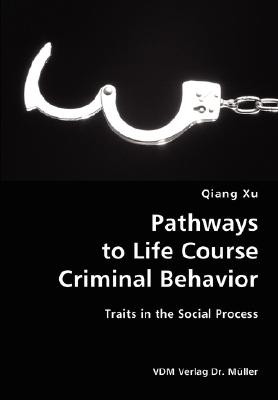
- We will send in 10–14 business days.
- Author: Qiang Xu
- Publisher: VDM Verlag Dr. Mueller E.K.
- Year: 2007
- Pages: 160
- ISBN-10: 3836428946
- ISBN-13: 9783836428941
- Format: 17 x 24.4 x 0.9 cm, softcover
- Language: English
- SAVE -10% with code: EXTRA
Pathways to Life Course Criminal Behavior- Traits in the Social Process (e-book) (used book) | bookbook.eu
Reviews
Description
Studies have identified both stability and change in criminal behavior across time. While most youth mature out of delinquency in their late teens and early adulthood, some juvenile delinquents persist in their criminal behavior with increased frequency and severity. Researchers are often confronted with this question: "Why will some youth continue their criminal behavior over time, when the majority of their peers have made the transition to conformity?'' Based on a longitudinal sample of previously institutionalized youth, this work examines and tests alternative perspectives on life course persistent criminal behavior. Findings of this work highlight several important factors that affect persistent criminal behavior. Demographic differences in pathways to persistent criminal behavior, such as gender and race variations are also discussed. The book is addressed to researchers and students in Juvenile Delinquency, Criminology and Sociology. It is also directed towards professionals in Criminal Justice, Corrections, and Social Work.
EXTRA 10 % discount with code: EXTRA
The promotion ends in 19d.21:23:20
The discount code is valid when purchasing from 10 €. Discounts do not stack.
- Author: Qiang Xu
- Publisher: VDM Verlag Dr. Mueller E.K.
- Year: 2007
- Pages: 160
- ISBN-10: 3836428946
- ISBN-13: 9783836428941
- Format: 17 x 24.4 x 0.9 cm, softcover
- Language: English English
Studies have identified both stability and change in criminal behavior across time. While most youth mature out of delinquency in their late teens and early adulthood, some juvenile delinquents persist in their criminal behavior with increased frequency and severity. Researchers are often confronted with this question: "Why will some youth continue their criminal behavior over time, when the majority of their peers have made the transition to conformity?'' Based on a longitudinal sample of previously institutionalized youth, this work examines and tests alternative perspectives on life course persistent criminal behavior. Findings of this work highlight several important factors that affect persistent criminal behavior. Demographic differences in pathways to persistent criminal behavior, such as gender and race variations are also discussed. The book is addressed to researchers and students in Juvenile Delinquency, Criminology and Sociology. It is also directed towards professionals in Criminal Justice, Corrections, and Social Work.


Reviews